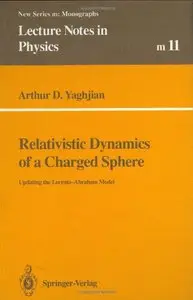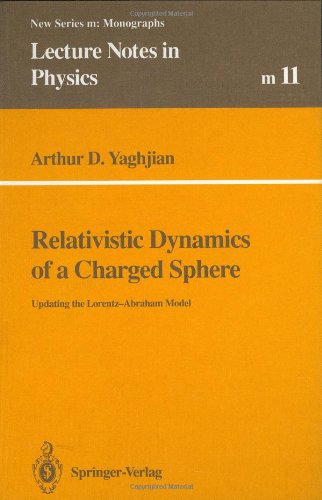Relativistic Dynamics of a Charged Sphere: Updating the Lorentz-Abraham Model (Lecture Notes in Physics New Series M) by Arthur Yaghjian
English | Sep 10, 1992 | ISBN: 0387978879 | 115 Pages | PDF | 7 MB
English | Sep 10, 1992 | ISBN: 0387978879 | 115 Pages | PDF | 7 MB
"This is a remarkable book. […] A fresh and novel approach to old problems and to their solution." –Fritz Rohrlich, Emeritus Professor of Physics, Syracuse University This book takes a fresh, systematic approach to determining the equation of motion for the classical model of the electron introduced by Lorentz more than 100 years ago. The original derivations of Lorentz, Abraham, Poincaré and Schott are modified and generalized for the charged insulator model of the electron to obtain an equation of motion consistent with causal solutions to the Maxwell-Lorentz equations and the equations of special relativity. The solutions to the resulting equation of motion are free of pre-acceleration and runaway behavior. Binding forces and a total stress–momentum–energy tensor are derived for the charged insulator model. General expressions for synchrotron radiation emerge in a form convenient for determining the motion of the electron. Appendices provide simplified derivations of the self-force and power at arbitrary velocity. In this Second Edition, the method used for eliminating the noncausal pre-acceleration from the equation of motion has been generalized to eliminate pre-deceleration as well. The generalized method is applied to obtain the causal solution to the equation of motion of a charge accelerating in a uniform electric field for a finite time interval. Alternative derivations of the Landau-Lifshitz approximation to the Lorentz-Abraham-Dirac equation of motion are also given, along with Spohn’s elegant solution of this approximate equation for a charge moving in a uniform magnetic field. The book is a valuable resource for students and researchers in physics, engineering and the history of science.



